#brood xix
Text
Great news for anyone in the brown or light blue areas! You may be seeing a whole lot of cicadas in spring :)

These 13 and 17-year periodical cicadas are in the genus Magicicada and will look just like those from brood X a few years ago:
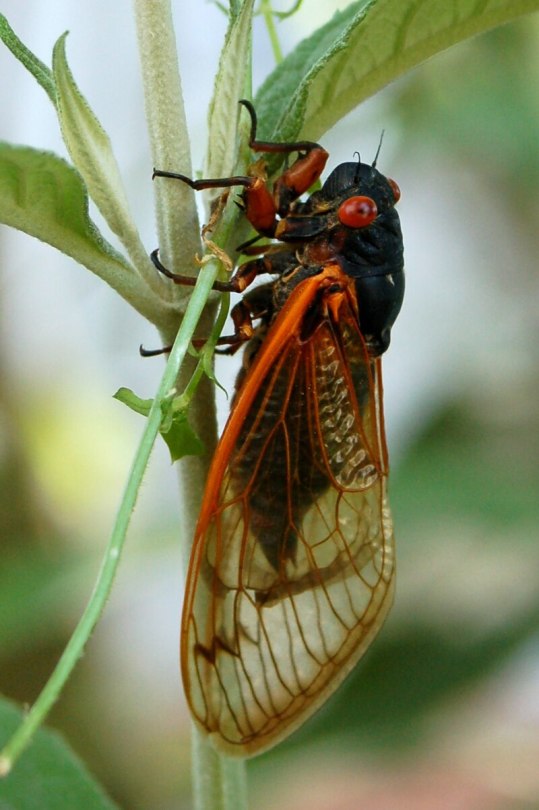
Photo by Philip N. Cohen - Brood XIX, 2011
Note: Some of brood XIII emerged early in 2020, so if you were in the Chicago area at the time, you may have seen some.
2K notes
·
View notes
Text

This summer is gonna be LOUD!
Cicadamania
44 notes
·
View notes
Text
Recent Tattoo Comm for the double brood cicada emergence coming up THIS YEAR!

Want your own cute bug? Commission Me! 🐞
#cicada#bug art#entomology#bug#insects#true bugs#hemiptera#insecta#bugs#comms open#comm info#brood xix#brood xiii#heartcore#kidcore#lovecore#lineart#cute bugs#hearts#bugs tw#tw bugs
14 notes
·
View notes
Text
I want to buy cicada merch in celebration of the periodical emergence this year.
If anyone has anything to recommend, especially anything by small independent artists, I would really appreciate it!! (It's so easy to find mass-produced stuff, but it's also more likely to be cheaply made or possibly a stolen design, y'know?)
I'm looking for anything cicada-related, but especially things I can wear!
#small artists#independent artists#cicada#magicicada#cicada emergence#cicadas 2024#periodical cicada#brood xiii#brood xix#brood 13#brood 19#art recommendations
9 notes
·
View notes
Text

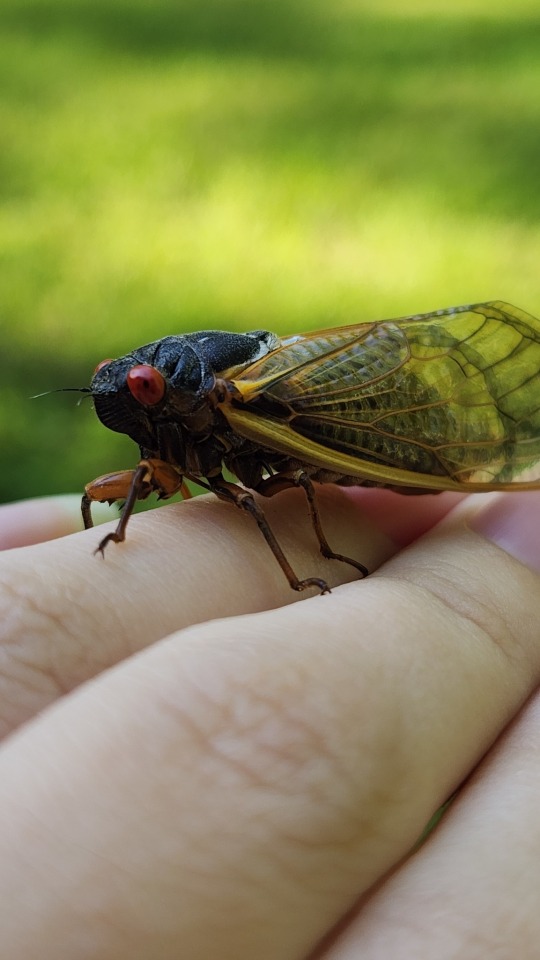
Riley's 13-Year Cicada Magicicada tredecim - Brood XIX
#cicada#found them in... april i think#this guy was an early emerger#Magicicada tredecim#Cicadoidea#Cicadidae#Magicicada#entomology#bug posting#Brood XIX#Complex Magicicada septendecim#me thinks
25 notes
·
View notes
Text
Cicada PSA
"Brood XIX and Brood XIII will both emerge this spring. The last time these bugs showed up at the same time in the United States, Thomas Jefferson was president."
See here for recipes.
#cicadas#eating insects#brood XIX#brood XIII#new food source#recipes for cicadas#PSA#let's eat bugs!
2 notes
·
View notes
Text
Wednesday's temperature check (procès-verbaux of 4-10)
While hosting a dinner for 1962 Nobel Prize winners, President Kennedy remarked, “I think this is the most extraordinary collection of talent, of human knowledge, that has ever been gathered together at the White House, with the possible exception of when Thomas Jefferson dined alone.” We are about to experience a second assemblage of equal significance this spring. The dual emergence of Cicada Brood XIX and Brood XIII has not happened since Thomas Jefferson dined alone. Because of amazing properties of mathematics – particularly prime numbers - the dual emergence only takes place every 221 years. Trillions of evolution's bizarro wonders, red-eyed periodical cicadas that have pumps in their heads and jet-like muscles in their rears, are about to emerge in numbers not seen in decades and possibly centuries. Brood XIII cicadas, mostly concentrated in Illinois, Iowa and Wisconsin, come out of the ground every 17 years. Their Brood XIX cousins emerge every 13 years and are spread across the Midwest and Southeast. Between them, they represent all seven known species of periodical cicadas. I really got into the Brood X back in 2021. But, according to UConn entomologists, I might not be at ground zero for “Cicada-geddon”. But these things have wings and there could be some around here. However, after watching The Last of Us, I’m kinda squeamish about the weird fungus that turns them into zombies. Oh, by the way, Thomas Jefferson wasn’t the boss-genius that JFK made him out to be. Jefferson wrote about cicadas in his Garden Book but mistakenly called them locusts – the scourge of ancient Egyptian pharaohs. Nevertheless, cicadas are harmless unless you have a seafood allergy; I’d suggest you not eat them.
Stay safe!
Tom
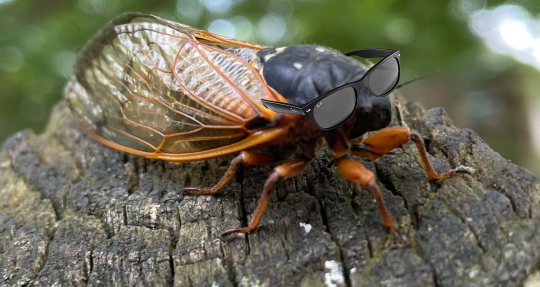
1 note
·
View note
Text
how is everyone planning to celebrate cicadageddon?
0 notes
Text
Pehr Kalm - Wikipedia
Pehr Kalm (6 March 1716 – 16 November 1779), also known as Peter Kalm, was a Finnish-Swedish explorer, botanist, naturalist, and agricultural economist. He was one of the most important apostles of Carl Linnaeus.
#USA#Yle.fi#University of Connecticut#UCONN#Magicicada#Brood XIX#Brood XIII#13-year brood#17-year brood#The Great Southern Brood#The Northern Illinois Brood#Kaskaat#Laulukaskaat#17-vuotis kaskaat#13-vuotis kaskaat
0 notes
Text
The World Has Not Seen Cicadas Like This Since 1803
0 notes
Text
PERIODICAL CICADA BROOD YEAR 2024!!

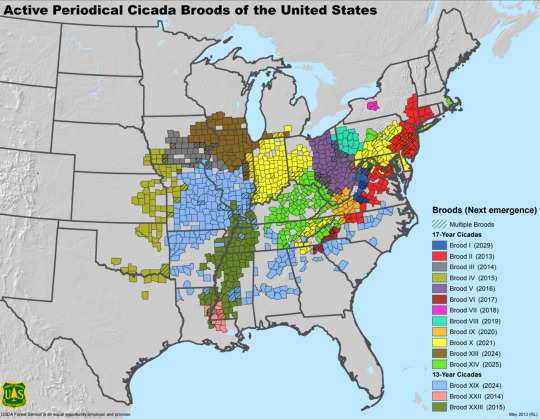
BROOD YEAR 2024 HELL YEAH BABY LET'S FUCKING GOOOOOO
#ragsycon exclusive#i'm right on the furry edge of brood xiii but i'm solidly in brood xix territory#not to mention our usual annual dogday cicadas
22 notes
·
View notes
Text
In the wake of North America's recent solar eclipse, another historic natural event is on the horizon. From late April through June 2024, the largest brood of 13-year cicadas, known as Brood XIX, will co-emerge with a midwestern brood of 17-year cicadas, Brood XIII.
This event will affect 17 states, from Maryland west to Iowa and south into Arkansas, Alabama and northern Georgia, the Carolinas, Virginia and Maryland. A co-emergence like this of two specific broods with different life cycles happens only once every 221 years. The last time these two groups emerged together was in 1803, when Thomas Jefferson was president.
Continue Reading.
179 notes
·
View notes
Note
I read an article about the coming summer being cicada-dense. Is that true? Big news for buzzing enjoyers if so.
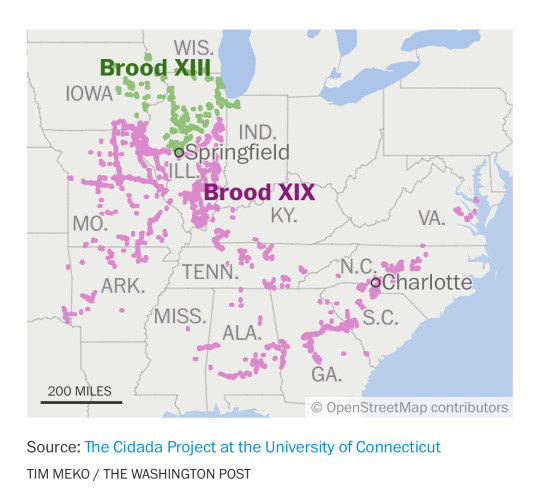
only in these areas, but what’s cool is how many species are represented among these two broods! all four 13-year species in brood XIX and all three 17-years in brood XIII. it’s a statistical rarity for them to be emerging at the same time; however, they probably won’t overlap in distributions.
I last saw brood X in 2021 and it was incredibly sad how zero came out where I live, and I only saw a handful of them someone brought me from a ways away. hope everyone on the map has a good time with theirs!
340 notes
·
View notes
Text
The Double-Emergence of 2024
As you may have heard, there are TWO periodical cicada broods that will emerge between late April and June of this year! This particular combination only happens once every 221 years.
The broods in question are the Illinoian Brood (XIII) and the Great Southern Brood (XIX). The map below is a rough approximation of where sightings are most likely to occur:
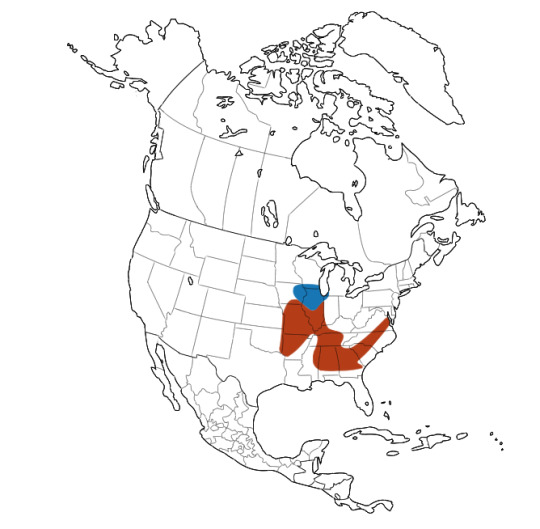
There is very little overlap between the broods, so - if you want to experience both - I recommend planning at least two different stops. You should be able to find all seven species by traveling just a few miles north and south of the cities of Springfield, Bloomington, Kankakee, or Beardstown in Illinois, or the city of Mt Pleasant in Iowa.
The University of Connecticut has a handy online guide for identifying all 7 species of periodical cicadas. Note that most species can only be identified by the pattern on their belly. For bonus points, try to find and photograph them all! 😄
60 notes
·
View notes
Text
The 13-year and 17-year broods that will emerge from underground this spring will be appearing together for the first time in 221 years.

Brood XIII (blue dots) and Brood XIX (red dots) will likely overlap in central Illinois and eastern Iowa.
“Nobody alive today will see it happen again,” says Floyd W. Shockley, an entomologist and collections manager at the Smithsonian’s National Museum of Natural History, to the New York Times’ Aimee Ortiz. “That’s really rather humbling.”
. . .
The rare, synchronized event should be finished by early July, meaning residents of affected states will once again be able to enjoy some peace and quiet. Cicadas’ mating songs can reach nearly 100 decibels, which is similar to the sound intensity of a chainsaw or a motorcycle.
18 notes
·
View notes
